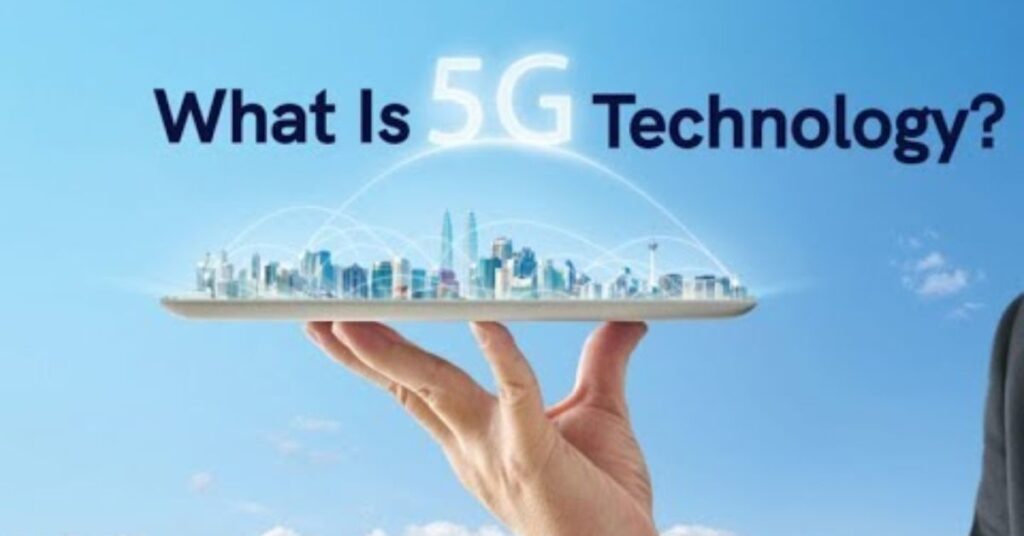The rise of 5G technology is reshaping the digital landscape. With its promise of faster speeds, lower latency, and enhanced connectivity, 5G cellular networks are at the forefront of innovation. For businesses in the United States, understanding the advantages of 5G and its potential challenges is essential.
From high-speed wireless connectivity to data intensive tasks, 5G technology has the potential to drive digital transformation across industries. However, it also brings challenges such as cybersecurity vulnerabilities and infrastructure upgrade costs. This article provides a comprehensive look at the advantages and disadvantages of 5G and why they matter for business leaders.
What is 5G?

5G technology is the fifth generation of mobile broadband, succeeding 4G LTE. It uses high-frequency radio waves and advanced technologies like small cell transmitters to deliver unprecedented speeds and reliability. Unlike its predecessor, 4G vs 5G shows a clear leap in data transmission speed and bandwidth efficiency, enabling seamless performance for data-intensive tasks.
At its core, 5G cellular networks support a wide range of applications, from IoT in factories to AI-powered 5G solutions. By leveraging network slicing technology, businesses can create tailored, secure private networks for specific use cases. This adaptability ensures that 5G technology is not just faster but also smarter, opening doors to smart cities technology and 5G-powered automation.
Why is 5G Important?
The advantages of 5G extend beyond faster internet. It is a catalyst for digital transformation in industries like manufacturing, healthcare, and transportation. Enterprise 5G adoption can enable remote device management, smart manufacturing, and edge computing applications, giving businesses a competitive edge.
5G expansion roadmap includes the integration of autonomous vehicles, virtual reality (VR), and augmented reality (AR). These innovations rely on low latency networks and enhanced mobility, which are only possible with 5G technology. For businesses, adopting 5G-enabled devices means future-proofing operations and unlocking new revenue streams.
Disadvantages of 5G
Despite its benefits, 5G technology has its drawbacks. The high cost of infrastructure upgrades can be a significant barrier for businesses. Deploying small cell transmitters across urban and rural 5G coverage areas requires significant investment. Additionally, signal penetration challenges mean that coverage in buildings and remote areas can be inconsistent.
Another concern is cybersecurity vulnerabilities. The integration of IoT in factories and AI-powered 5G solutions increases the risk of data breaches. As more devices connect to 5G cellular networks, ensuring network reliability and security becomes critical. Businesses must carefully weigh these factors when planning their 5G expansion roadmap.
How Does 5G Technology Work?

5G technology operates on high-frequency radio waves using advanced infrastructure. Unlike traditional towers, it relies on small cell transmitters that enable faster and more reliable connections. These transmitters work with the 5G NR standard, ensuring consistent performance across devices.
The use of low latency networks and error rate reduction makes 5G cellular networks ideal for data-intensive tasks. By leveraging edge computing applications, businesses can process data closer to the source, reducing delays. This combination of technologies is what sets 5G technology apart from previous generations.
You May Read this Blog: The Complete Guide to 5G Technology: Advantages, Features, and Business Insights
5G Use Cases
The potential applications of 5G technology are vast. In transportation, it enables autonomous vehicles by providing real time communication between sensors and systems. For urban development, smart cities technology uses 5G cellular networks to optimize traffic, energy, and public safety.
In healthcare, 5G powered automation supports advanced telemedicine and remote surgeries. The integration of virtual reality (VR) and augmented reality (AR) also revolutionizes training and treatment methods. These 5G applications demonstrate how businesses can harness its power for innovation.
IBM and 5G

IBM plays a crucial role in advancing 5G technology. Through solutions like IBM Cloud Satellite, it supports enterprise 5G adoption by offering secure, scalable platforms. IBM’s focus on AI powered 5G solutions enables businesses to harness data-driven insights for better decision making.
By partnering with telecommunications providers, IBM is shaping the future of wireless networks. Its contributions to 5G cellular networks help businesses manage data intensive tasks while ensuring network reliability. For business leaders, IBM’s expertise in 5G expansion roadmap makes it a valuable partner.
Key Benefits of 5G

The advantages of 5G are transformative. Its data transmission speed and bandwidth efficiency enable faster operations, from faster download speeds to real time collaboration. Enhanced mobility ensures seamless connectivity across devices, supporting smart manufacturing and IoT in factories.
A significant benefit is network slicing technology, which allows businesses to customize networks for specific needs. This flexibility, combined with low latency and error rate reduction, makes 5G cellular networks the ideal choice for modern enterprises. The ability to handle data intensive tasks is a game changer for industries.
More Resources on 5G
To dive deeper into 5G technology, explore these resources:
| Resource Name | Description | Link |
| FCC 5G Overview | Insights on U.S. 5G expansion roadmap | FCC.gov |
| IBM 5G Solutions | Learn about IBM Cloud Satellite and enterprise 5G adoption | IBM.com |
| IEEE 5G Research | Technical studies on 5G NR standards and innovations | IEEE.org |
These materials provide valuable knowledge for business leaders aiming to navigate the advantages and disadvantages of 5G.
FAQ’s
What is 5G?
5G technology is the fifth generation of mobile networks, offering faster speeds, lower latency, and better connectivity than 4G.
What are the main advantages of 5G?
5G cellular networks provide high-speed wireless connectivity, support for IoT devices, and improved network reliability for businesses.
What are the disadvantages of 5G?
5G technology has high infrastructure costs, limited rural 5G coverage, and potential cybersecurity vulnerabilities.
How does 5G impact businesses?
It enables digital transformation, supports 5G-powered automation, and improves business connectivity with faster and more reliable networks.
What industries benefit most from 5G?
Industries like manufacturing, healthcare, and transportation benefit through smart manufacturing, remote device management, and autonomous vehicles.
Conclusion
For U.S. businesses, understanding 5G technology is crucial. The advantages of 5G, such as faster download speeds and data-driven insights, offer transformative opportunities. However, challenges like cybersecurity vulnerabilities and infrastructure upgrade costs must be addressed.
By staying informed and leveraging solutions like IBM Cloud Satellite, businesses can harness the power of 5G technology to stay ahead in a competitive market.







